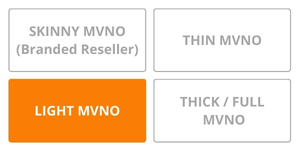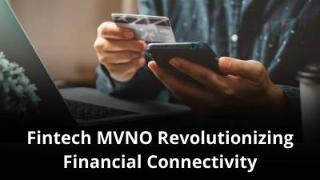Introduction about starting a Brand MVNO (Mobile Brands)
Brand MVNOs/IOT leverage a strong existing consumer brand, and often a point-of-sale distribution network. The numerous supermarket MVNOs are good examples. Brick-and-mortar retail chains (think Walmart, Aldi, etc.) can use their brand recognition to convert shoppers into mobile subscribers. Not only will this create entirely new and dependable streams of revenue for their business. But it’ll also enable them to drive engagements, promote sales, and improve customer services and experiences.
Retailers also have the additional advantage of online and physical storefronts, which can be used to sell and distribute (e)SIM cards, devices, etc. By leveraging their brand value, their customer base and developed distribution channel, they are strong competitors for incumbents.
What do you need to know about starting a Brand MVNO/IOT:
- What are the advantages and disadvantages ?
- What are the Revenue sources and Pricing strategy?
- What are suitable segments?
- What kind of Mobile bundles are typically used?
- What kind of ARPU can you expect?
- What is the Go-to-Market Strategy?
- What are some points to think of for the Marketing Plan?
- What kind of financing is to be expected?
- What kind of MVNO type is typically used?
- What is the expected time for the launch?
- What is the expected impact of 5G?
- What is the expected impact of eSIM?
- IOT and its Relation to Brand MVNOs
- Benefits of Launching Brand MVNO/IOT
- Frequently Asked Questions
- Summary
What are the advantages and disadvantages of Brand MVNOs/IOT?
Advantages: Brand MVNOs leverage existing consumer trust, creating a seamless transition from the parent brand. Customers are more likely to subscribe to a service associated with a trusted, well-known brand.
Disadvantages: Overreliance on the parent brand might limit innovation. It’s essential to strike a balance between brand consistency and MVNO’s unique value proposition to avoid being overshadowed.
What are the Revenue sources and Pricing strategy for Brand MVNOs/IOT?
Revenue Sources: Leverages the parent brand’s reputation to attract customers. Revenue primarily comes from mobile services and additional offerings associated with the brand.
Pricing Strategy: Offers competitive pricing with a focus on convenience and brand loyalty. Include offerings on store articles/supplies, like discount coupons. Or the other way around offer free voice, SMS, or data to returning shoppers.
What are suitable segments for Brand MVNOs/IOT?
- Fashion Brands: Offering mobile services associated with high-end fashion brands, providing exclusive fashion content and event access.
- Automobile Brands: Partnering with automobile brands, offering mobile services with car-related content, road assistance, and exclusive vehicle-related offers.
- Food and Beverage Brands: Providing mobile services tied to popular food and beverage brands, offering discounts, recipes, and exclusive culinary events.
- Tech Giants: Partnering with major tech companies, offering mobile services with tech-related news, app bundles, and early access to gadgets.
- Entertainment Companies: Offering mobile services in collaboration with entertainment giants, providing exclusive movie releases, concert tickets, and fan experiences.
- Consumer Electronics: Providing mobile services linked to the store, offering discount coupons, product discounts, include the SIM (eSIM) in the products, and exclusive offers..
- Retail stores: Providing mobile services linked to the store, offering discount coupons, shopping notifications, product discounts, and exclusive offers.
- Travel Companies: Partnering with travel agencies, offering mobile services with travel guides, flight discounts, and vacation packages.
- Gaming Companies: Collaborating with gaming companies, offering mobile services with game bundles, in-game bonuses, and early access to new releases.

What kind of Mobile bundles are typically used for Brand MVNOs?
Data: Moderate to high demand for exclusive brand content, interactive experiences, and app usage. Use case: Exclusive videos, interactive apps, virtual demonstrations.
Voice: Moderate demand for customer support and general inquiries. Use case: Customer service calls, general inquiries.
SMS: Moderate demand for promotional offers, loyalty program updates, and event invitations. Use case: Discount notifications, event invitations.
What kind of ARPU can you expect for Brand MVNOs?
ARPU: Moderate to High.
Why: Brand MVNOs leverage existing consumer brands, attracting loyal customers willing to pay for exclusive branded services and content.
Where It Is Based On: ARPU is based on brand loyalty, with customers willing to invest in services associated with trusted brands.
You need to work out the details in your Financial Plan.

What is the Go-to-Market Strategy for Brand MVNOs?

Utilize in-store promotions at parent brand outlets. Leverage loyalty programs and customer databases for targeted marketing. Cross-promote through existing customer networks, emphasizing the convenience and familiarity of the parent brand’s offerings.
- Target Audience: Existing customers of the parent brand, brand loyalists, and consumers seeking a seamless brand experience.
- Pricing Strategy: Competitive rates with additional brand-related perks, loyalty rewards for brand customers.
- Distribution Channels: Brand stores, online platforms, and events associated with the parent brand.
- Promotion: Loyalty program integration, exclusive brand-related content, and personalized offers for brand customers.
- Customer Support: Integrated customer support systems, brand-specific FAQs, and cross-channel support integration.
What are points to think of for the Marketing Plan for Brand MVNOs?
Capitalizes on the parent brand’s existing customer base. Uses in-store promotions, loyalty programs, and cross-promotion to attract subscribers. You need to work out below points in your Marketing Plan.
USP: Seamless brand experience, exclusive offers, and access to brand-related content and events.
Content Creation: Behind-the-scenes brand footage, brand history videos, and user-generated content campaigns. Product videos
Promotions: Limited-edition brand merchandise, exclusive access to brand launches, and loyalty points for brand purchases.
Partnerships: Collaborate with influencers using the brand, exclusive partnerships with brand ambassadors, and co-branded events.
Feedback Loop: Utilize brand loyalty data, conduct surveys among brand customers, and analyze purchasing behavior to enhance offerings.

What kind of financing is to be expected for Brand MVNOs?

Financing: Medium
Brand MVNOs leverage existing consumer brands, requiring medium initial investment for brand licensing, marketing, and creating a seamless brand experience.
Financing is essential for integrating MVNO services into the existing brand ecosystem, ensuring consistency across platforms and services.
You need to work the details in your Financial Plan.
What kind of MVNO type is typically used for Brand MVNOs?
MVNO Type: Light MVNO
Brand MVNOs leverage existing consumer brands, demanding a high level of control over branding, service integration, and customer experience. Light MVNOs allow them to fully customize their offerings, ensuring a seamless brand experience across all services.
See also: Different types of MVNOs

What is the expected time to launch for Brand MVNOs?

Expected Time to Launch: 6-12 months
Brand MVNOs need extensive integration with existing consumer brands, ensuring consistency in branding, customer experience, and service offerings. Building a seamless brand experience across multiple platforms takes time.
You might be able to expedite the launch process with a specific Strategy: For example, invest in a robust CRM system for personalized customer interactions. Utilize data analytics to understand customer behavior. Implement loyalty programs to retain customers from the brand’s existing customer base.
What is the expected impact of 5G for Brand MVNOs?
5G enhances customer interactions through augmented reality (AR) experiences and innovative marketing campaigns. Brand MVNOs can leverage 5G’s capabilities for immersive brand promotions, driving customer engagement and loyalty. For more details see the Mobile Network section.

What is the expected impact of eSIM for Brand MVNOs?
IOT and its Relation to Brand MVNOs
The Internet of Things (IoT) presents significant opportunities for Brand MVNOs to enhance customer engagement, gather valuable data, and offer unique services that reinforce brand identity. By leveraging IoT, these MVNOs can create deeper connections with their target audience and differentiate themselves in the competitive mobile market. Here’s how:
Product Integration and Enhanced User Experience: Brand MVNOs can integrate their mobile services with their core products or services through IoT. This integration can enhance the user experience and create a seamless ecosystem. For example, a home appliance brand could offer a Brand MVNO that integrates with its smart appliances. Customers could monitor and control their appliances remotely through the MVNO’s app, receive maintenance alerts, and even order replacement parts directly. This creates added value beyond basic mobile connectivity.
Building Brand Loyalty and Community: By offering unique IoT-integrated services, Brand MVNOs can foster a stronger sense of community among their customers. These services can create shared experiences, encourage interaction, and reinforce brand loyalty. For example, a music streaming service with a Brand MVNO could offer exclusive access to live concerts streamed through connected devices, creating a shared experience for fans and strengthening their connection to the brand.
Data Collection and Personalized Offers: IoT devices generate valuable data about customer usage patterns and preferences. Brand MVNOs can leverage this data to personalize offers, promotions, and content, strengthening customer loyalty. For example, a fitness apparel brand with a Brand MVNO could track users’ activity levels through connected wearables and offer personalized training plans, nutritional advice, and exclusive discounts on relevant products.
Connected Experiences and Brand Storytelling: IoT can be used to create interactive and engaging experiences that reinforce the brand’s story and values. For example, an outdoor adventure brand could offer a Brand MVNO that integrates with GPS trackers and other outdoor gear. Users could share their adventures, track their progress, and even participate in virtual challenges through the MVNO’s app, fostering a sense of community and reinforcing the brand’s adventurous spirit.
Supply Chain Optimization and Customer Service: IoT can also be used to improve supply chain efficiency and enhance customer service. For example, a retail brand with a Brand MVNO could track inventory levels in real-time using IoT sensors and proactively notify customers about product availability or potential delays. They could also use connected devices to provide remote diagnostics and support for their products, improving customer satisfaction and reducing support costs.
By strategically integrating IoT into their offerings, Brand MVNOs can move beyond simple connectivity and create a more valuable and engaging experience for their customers, driving brand loyalty and differentiation in the market.
Benefits of Launching Brand MVNO/IOT
Enhanced Brand Image: Leverage the MVNO platform to strengthen brand identity and connect with customers on a deeper level. This could involve offering co-branded mobile plans, integrating loyalty programs within the MVNO app, or providing exclusive content and experiences for mobile users.
Direct Customer Engagement: Create a direct communication channel with customers through the MVNO platform. This allows for targeted marketing campaigns, personalized customer service interactions, and real-time feedback collection to improve brand perception.
Data-Driven Marketing Strategies: Gain valuable insights into customer behavior and preferences through user data analysis. This information can be used to develop targeted marketing campaigns, personalize product offerings, and improve customer engagement strategies.
New Revenue Streams: Explore additional revenue streams beyond traditional mobile subscriptions. This could involve offering in-app purchases, partnerships with content providers, or the development of value-added services like mobile advertising or loyalty programs.
Connected Products with Brand Integration: Offer connected products with brand integration, such as smart apparel, connected appliances, or smart accessories.
IoT-Enabled Loyalty Programs: Implement IoT-enabled loyalty programs that reward customers for interacting with connected brand products and services.
Frequently Asked Questions
1. How do Brand MVNOs grow their customer base beyond the existing customers of the parent brand, and what strategies will they use to attract subscribers who might not be familiar with the parent brand?
Brand MVNOs are focused on expanding their customer reach through targeted marketing initiatives and strategic partnerships. In addition to appealing to existing brand loyalists, they aim to attract fresh audiences by offering compelling introductory deals, collaborating with influencers, and leveraging digital advertising channels. These efforts are geared towards increasing brand visibility and attracting potential subscribers who may not have prior exposure to the parent brand.
2. How to Brand MVNOs handle brand consistency & innovation, and how will they ensure that the MVNO's value proposition stands out while still taking care of the reputation of the parent brand?
Brand MVNOs are aware of the need to maintain brand coherence while doing innovation. To achieve this balance, they intend to identify areas where innovation can complement the strengths of the parent brand rather than overshadow them. Strategies may include introducing new features or services that resonate with the brand’s ethos and target demographic, while soliciting feedback from customers to ensure that their unique value proposition remains compelling.
3. What concrete steps will Brand MVNOs take to seamlessly integrate MVNO services into the existing ecosystem of the parent brand? Additionally, how do they plan to leverage the physical and online storefronts of the parent brand for distribution and promotional purposes?
Brand MVNOs prioritize the seamless integration of MVNO services into the existing framework of the parent brand to capitalize on existing customer touchpoints. They aim to achieve this by offering exclusive promotions or discounts on mobile services to customers who patronize physical or online outlets owned by the parent brand. By aligning MVNO services with the distribution and promotion channels of the parent brand, Brand MVNOs can enhance brand visibility and attract new subscribers while providing added value to existing customers.
4. Beyond leveraging brand loyalty, what strategies will Brand MVNOs employ to foster ongoing customer engagement and retention? How do they plan to create a sense of community among subscribers and encourage sustained brand loyalty?
Brand MVNOs understand the significance of continual customer engagement and retention in nurturing a loyal subscriber base. To this end, they may create online forums or social media groups where customers can interact with one another and with representatives from the brand. Furthermore, they may offer exclusive perks or rewards to loyal subscribers, such as access to VIP events or discounts on future purchases. By maintaining regular communication with customers through targeted marketing campaigns and responsive customer service, Brand MVNOs can strengthen relationships with subscribers and foster enduring brand loyalty. Brand MVNOs can also create some kind of shopping credits for example a certain amount of free data when the subscribers purchases for a certain amount in the shop.
5. How will Brand MVNOs adapt to emerging technologies like 5G and eSIMs to enrich the customer experience and remain competitive in the market? Additionally, what specific plans are in place to harness these technologies for innovative marketing campaigns and branded virtual experiences?
Brand MVNOs are committed to embracing technological advancements to enhance the customer experience and stay ahead in the competitive market landscape. They may invest in infrastructure upgrades to support emerging technologies such as 5G, enabling faster data speeds and lower latency for subscribers. Moreover, they may explore opportunities to leverage eSIM technology to streamline the activation process for customers. To capitalize on these advancements for marketing purposes, Brand MVNOs may develop innovative campaigns that showcase the benefits of 5G connectivity or offer branded virtual experiences through augmented reality or virtual reality applications. By embracing cutting-edge technologies and integrating them creatively into their marketing efforts, Brand MVNOs can differentiate themselves in the market and appeal to tech-savvy consumers seeking innovative mobile services.
Summary
In Summary, brand MVNOs offer a unique opportunity to leverage established brand trust to enter the mobile service market. By carefully considering the advantages and disadvantages of this business model, as well as potential revenue sources, pricing strategies, and suitable market segments, brand MVNOs can position themselves for success in a competitive landscape.
The key to success for brand MVNOs lies in striking a balance between leveraging their brand identity and maintaining flexibility in the mobile service market. By offering competitive rates, innovative plans, and a strong focus on customer service, brand MVNOs can build a loyal customer base and carve out a niche for themselves in this growing market.



















